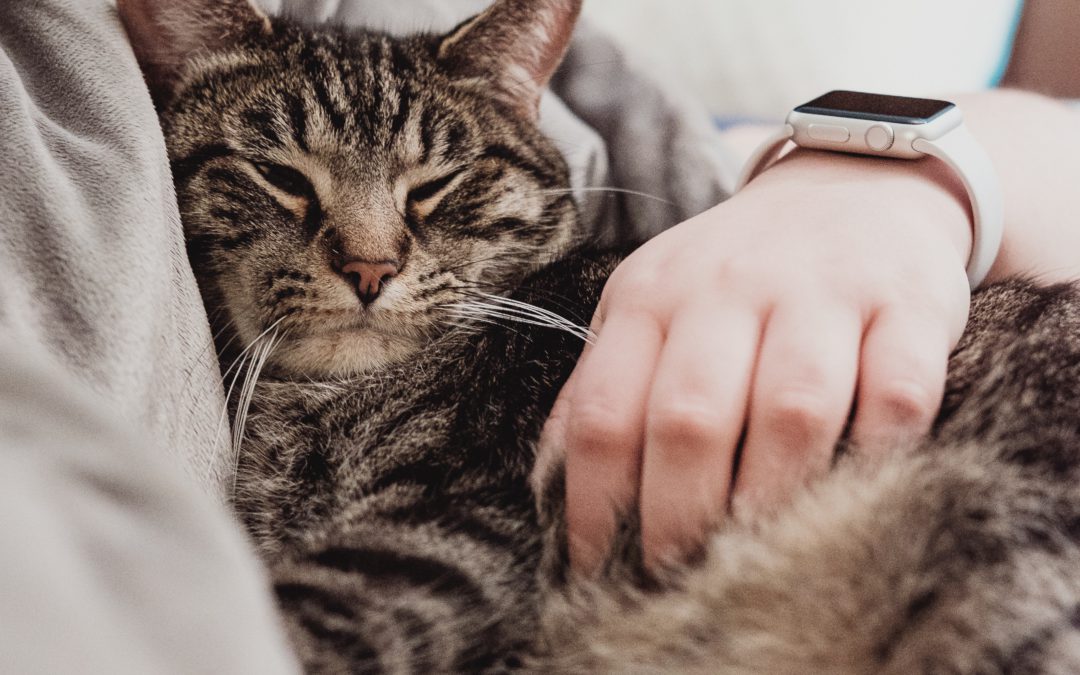 Pet Facilitated Therapy in Long Term Care
Pet Facilitated Therapy in Long Term Care
Five Benefits + Five Steps
by Debbie Hommel, ACC/MC/EDU, CTRS
Walking into the lobby, my eyes are drawn to the small poodle who greets me. “His name is Tootles”, says the gentleman seated in a wheelchair by the front door. “He’s our guard dog”, he added with a chuckle. I reached down to pet Tootles and I was officially welcomed to the home. Residential pets contribute to creating homes in our care facilities. Whether your facility has a resident pet or visiting pets, the therapeutic value of pets in care facilities is well documented. Providing opportunities to continue a human/pet relationship into our care facilities provides countless benefits. Many people don’t feel it is “home” without the family pet.
Pet therapy is also called animal assisted therapy by researchers and physicians. According to Wikipedia – “Animal-assisted therapy (AAT) is a type of therapy that involves an animal with specific characteristics becoming a fundamental part of a person’s treatment. Animal-assisted therapy is designed to improve the physical, social and cognitive functioning of the patient.” Formal pet facilitated therapy programs were introduced into long term care facilities in the 1970’s, with the intent to humanize health care.
Here are five benefits to introducing pets into your care community:
1. Mental stimulation: Pets provoke reminiscence and discussion of personal pets from the past and pet caretaking tasks. It is interesting to observe residents with dementia who remember the names of visiting pets while they cannot remember what they had for lunch.
2. Diversion: A visiting or residential pet shifts the focus away from the individual’s personal problems to something else. There is nothing like a cute kitten or dog to provoke a smile and change one’s outlook.
3. Acceptance: A common benefit defined in the animal/human bond is the unconditional love offered from the pet. The pet offers affection freely, regardless of mental or physical status.
4. Self Esteem: Involving the residents in caring for the pets gives them a sense of purpose. Not being needed anymore or not having to take care of anything is a devastating loss amongst the elderly. Many residents feel a renewed sense of being needed when involved in the daily care of facility pets.
5. Physiological: Petting animals releases serotonin, a mood elevating hormone and is known to lower blood pressure. There are some studies which indicate involvement with pets improves one’s immune system and lower cholesterol levels.
Here are five steps to introduce pets to your care community:
1. Identify any state regulations regarding pets. There are no federal regulations, so we must abide by state regulations if they are defined. Eighteen states have specific regulations regarding pets in nursing homes. The length and intensity of the regulations vary from state to state. Although the regulations may vary, they all focus on maintaining the health and wellbeing of the pet, prohibiting the pet from food preparation and serving areas and the care and maintenance of the pet.
2. The next decision should be shared with the staff and residents of your community. Should the facility adopt a residential pet or just have visiting pets? What type of pet should be introduced to the community? Dogs? Cats? Puppies? Kittens? Fish? Birds? Rabbits? Ferrets? A survey of staff and residents should be conducted to identify those with a strong interest in participating and those with misgivings. If there are staff or residents fearful of or allergic to animals, this needs to be addressed prior to the pets arriving.
3. Once the parameters of the program are established, someone should be designated responsible for the pet program. Usually, this is the activity department. Duties would include maintaining pertinent records associated with the visiting or residential pets, care and maintenance of any residential pets, maintaining policies associated with the program, and being the contact person for families bringing their pets to visit.
4. Policies and procedures should be established to define and support the program. If a residential pet is introduced, very clear policies should be introduced to define care and cleanliness of the pet, defining pet free areas in the home, maintaining cleanliness of the home and disposing of pet waste. Additionally polices for visiting pets should be created outlining the screening method to introduce family pets and the necessary health records that should be on file.
5. Finally, a budget should be established for the care of any residential pets. Pet food, bedding materials and veterinarian costs should have a separate line item in the facility budget
Check out some Pet Therapy sites on the Resource Page
Check out the 9 Hour NCCAP Approved Independent Study Program
Organizing a Pet Facilitated Therapy Program
“Animals are such agreeable friends. They ask no questions, they pass no criticisms.” ~George Elliot

